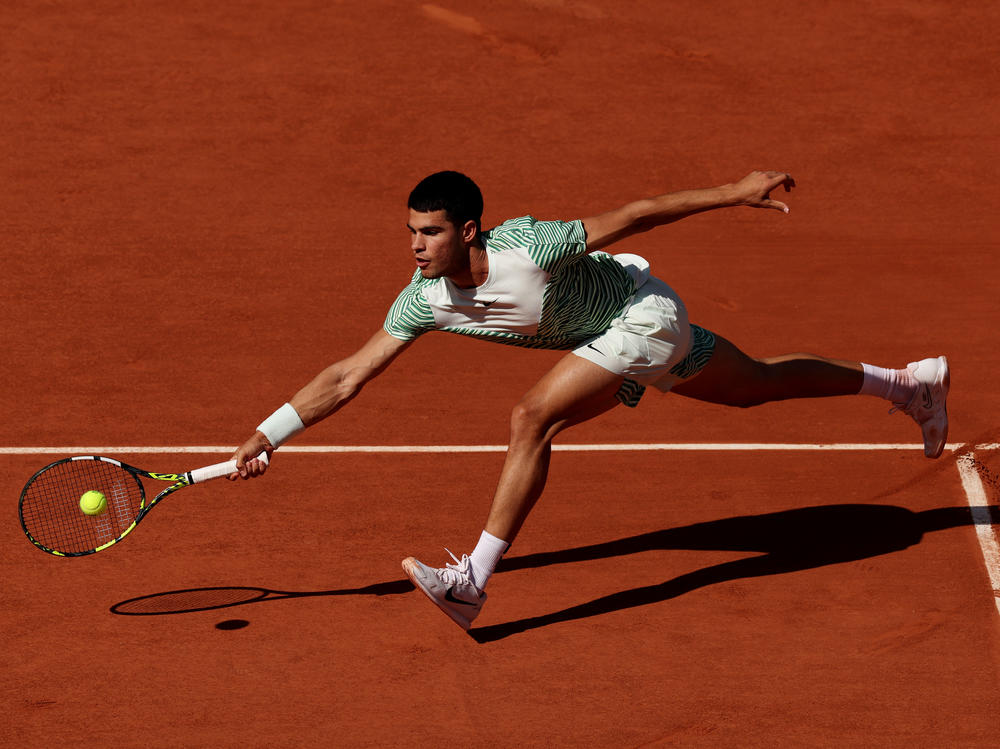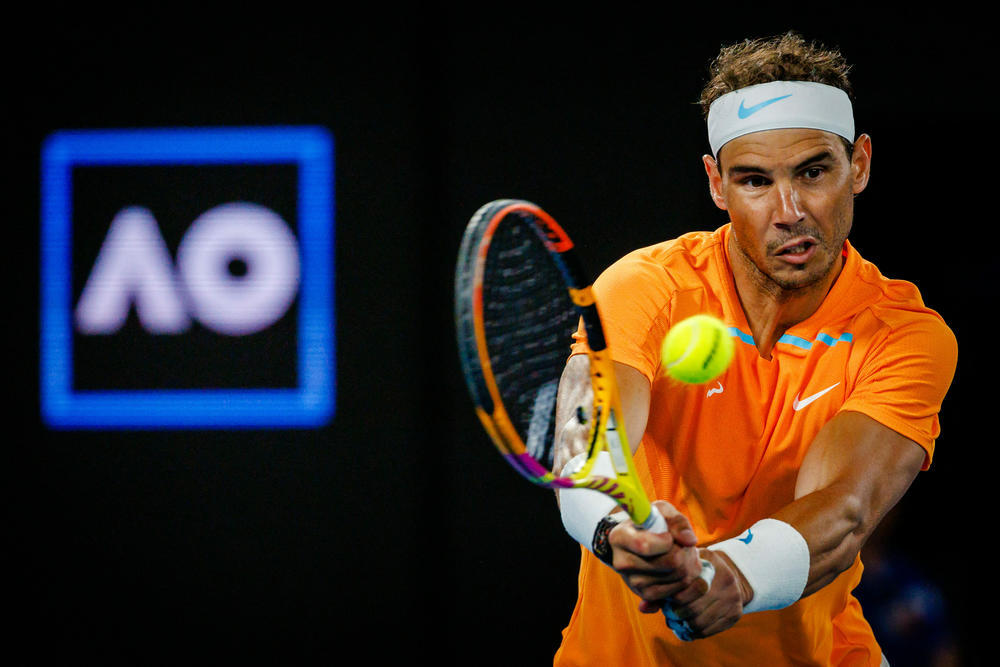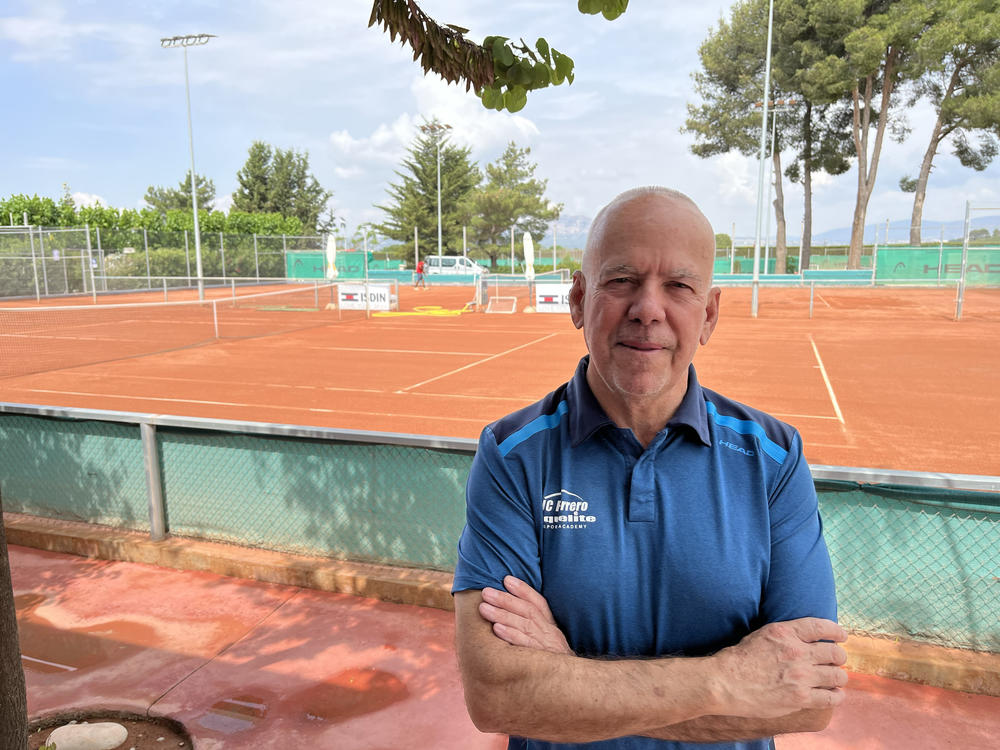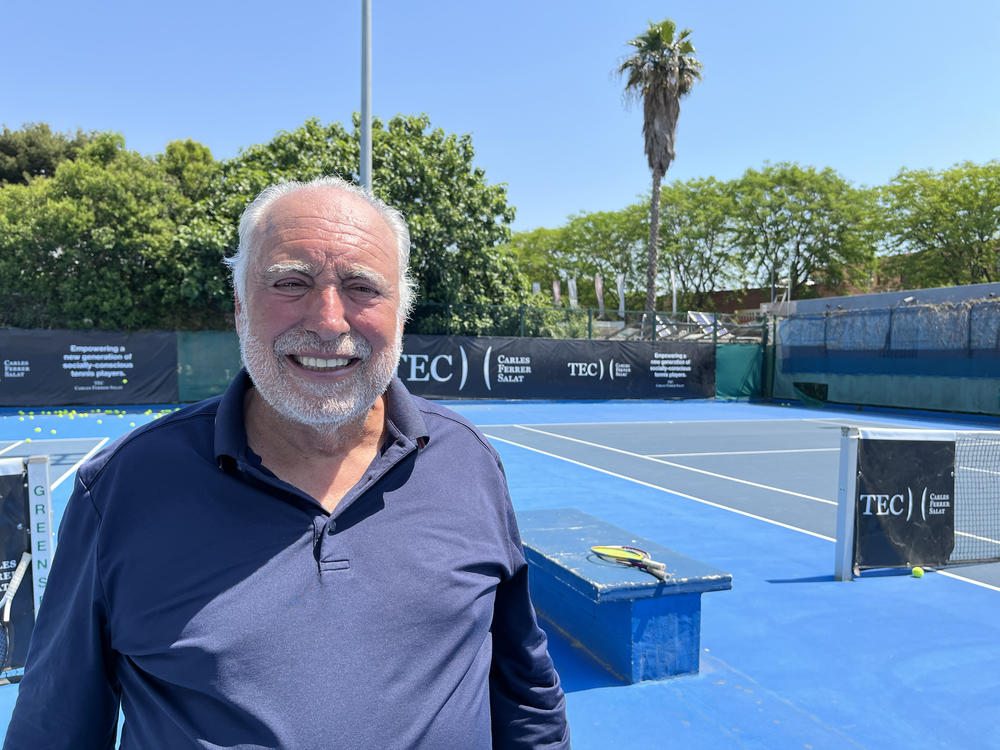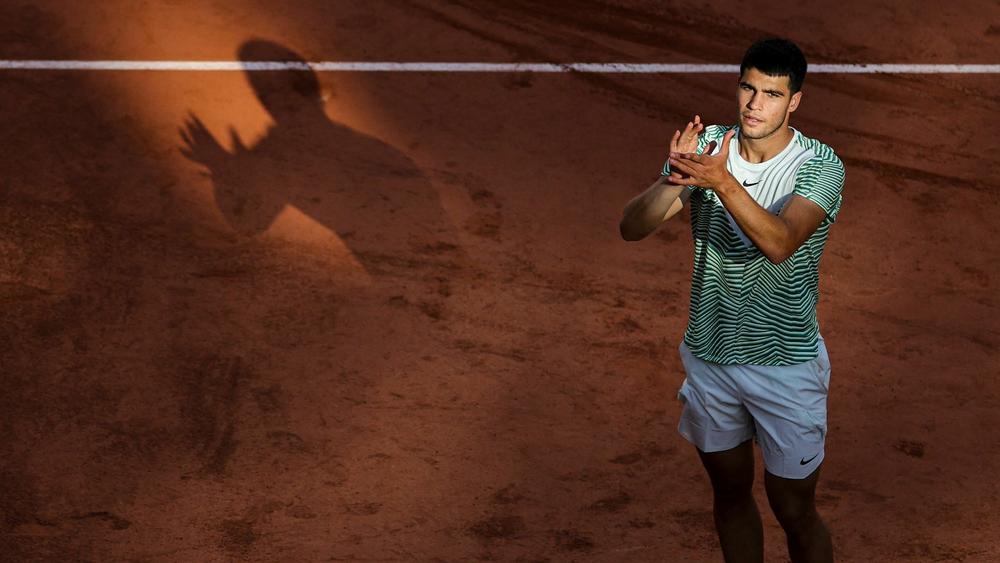Section Branding
Header Content
The Spanish tennis pipeline that's produced Carlos Alcaraz and Rafael Nadal
Primary Content
VILLENA, SPAIN – It takes a series of decrepit, one-lane roads wending through the quiet, sun-drenched olive and orange orchards of the southern Spanish countryside before you begin to hear a chorus of popping sounds; tennis balls being hit by a group of elite players that include the top player in the world, Carlos Alcaraz.
In the past year, the 20-year-old from the nearby city of Murcia has quickly climbed his way to the top of the game through a combination of explosive forehands at sharp angles, jumping backhand cannon returns, and flawless drop shots that send opponents scurrying to the net, usually in vain.
Nonstop parade of Spanish stars
The rising star of Alcaraz has coincided with the falling one of his larger-than-life contemporary and fellow countryman Rafael Nadal, who, after winning a record 14 titles at the French Open, has opted out of this year's Grand Slam tournament due to a hip injury.
That both players are from Spain is not a coincidence. A combination of factors — climate, infrastructure, and training — over the past five decades has converged to create a Spanish pipeline of players that have come to dominate tennis in the 21st century.
"It's not the best site in the world for a tennis academy, but it's a place that's very peaceful with a good climate," says Antonio Cascales of the Juan Carlos Ferrero Equelite Tennis Academy, a campus he co-founded and named after the first player he guided to #1 in the world.
Antonio Martinez Cascales is short, bald, and his face reveals a quiet serenity as he strolls between the courts at the academy. He often stops to observe someone play, and that's what he was doing seven years ago when he first saw Carlos Alcaraz play a match. The then-13-year-old boy lost to an opponent a year older, but he made a deep impression on Cascales. "What I saw was a boy with a lot of talent, but a little anarchic," he says. "He didn't have a strict pattern of play, but you could tell right away he had promise."
Cascales says decades ago when he first saw 10-year-old Juan Carlos Ferrero play, he didn't have enough experience to tell whether the boy would someday be number one in the world, but by the time he and a retired Juan Carlos Ferrero brought Alcaraz to their academy, Cascales was older, wiser, and was convinced this boy would someday dominate the sport.
Athleticism and mentality
"It was his mentality," says Cascales. "He had a great passion for the sport. He was always watching tennis videos – he still does – and he hit the ball with such force. He was aggressive, coming up to the net, making distinctive shots, and when you combine his physicality with his passion, it became clear to me he'd make it. He was a fighter."
Being a fighter on the court has become synonymous with Spanish tennis players: Whether it's Alcaraz, Nadal, Carlos Moya, or any number of the dozens of Spaniards who have risen through the ranks in the past few decades, Cascales says players from his home country tend to be harder working because of the surface they grow up playing on.
"In the 1970s, Spain built more than a thousand tennis clubs, all of them with clay courts," Cascales says. "So for fifty years, Spanish players have grown up playing on clay. The surface slows down the pace of play and it creates longer points, so you have players who learn how to work hard and play consistently."
A tennis court building boom a half-century ago
Spain's tennis court building boom arrived in the early 1970s when dictator Francisco Franco, unpopular in the West, became enamored with Spanish tennis champion Manolo Santana, who brought Spain international fame by winning the U.S. Open, Wimbledon, and the French Open. Franco quickly ordered the construction of thousands of tennis courts for the masses.
"Franco felt that tennis could be a great sport for the country, all the people," says Chris Lewit, author of The Secrets of Spanish Tennis, "So he wanted to make investments all over the country in tennis clubs and facilities. And those investments, a decade or two later, paid off and there was a huge tennis boom in Spain."
More players meant more coaches were needed. Lewit says two coaches, both in Barcelona, rose to become the most influential: Pato Alvarez and Lluis Bruguera. Both had students who came to dominate the sport in the 1980s and 1990s, and their training methods became enshrined in national manuals distributed to Spain's local clubs.
Lewit says Alvarez was a ballroom dancer, and he made footwork the central aspect of training. "And he developed this method of drills, mainly drills from baskets. Sometimes in Spain, they call them 'Cubos,' or buckets of balls," says Lewit. "And they're these series of geometric movement drills and movements that can be linked together."
It's a system that coach Lluis Bruguera, now 79, still uses to teach players here at an academy in Barcelona. "I'm often asked why are there so many top tennis players from Spain?" says Bruguera. "Well, it's because our system is good and the Spanish character is also good. It's no coincidence that practically every country in the world uses these exercises now to train their players."
Coaching, not yelling
Some coaches yell at their players. Others lecture them. Bruguera asks them questions. "Where is your hand?" Bruguera asks one player, who responds with a raise of his hand.
"No," Bruguera says, clicking his tongue in disappointment. "Where is your hand?" he asks again, this time getting nothing in response except a confused look from the player.
"This," says Bruguera, pointing to the face of the player's racket, "is your hand."
Author Chris Lewit says Bruguera's training encompass six pillars of what he calls "the Spanish method," and they include excellent footwork, a game focused on making as few errors as possible, developing a forehand weapon, and excellent defense. But one of the most important pillars, says Lewit, is mental. "All the young players in Spain are taught to suffer on the tennis court, which, if you're not from Spain, may sound a little odd or strange, but they really do believe that wholeheartedly," says Lewit. "And it's a big part of their philosophy and culture and the tennis culture in Spain and also to some extent, the culture itself."
And Lewit says one player, Rafael Nadal, exemplifies this aspect of Spanish tennis more than anyone. "The mentality, the energy, the willingness to chase every ball and fight," says Lewit, "you know when you're playing a Spanish player it's going to be a long day at the office because they never give up, they never tire, and they're going to fight you all the way to the end."
Numbers seem to back this up
According to the Association of Tennis Professionals, Spanish players made up an average of 13 of the top 100 male players each year for the past two decades. Compare that to an average of only nine American men, despite the U.S. having seven times the population of Spain.
Back at the Juan Carlos Ferrero Academy, Alcaraz coach Antonio Cascales says he believes Alcaraz will become one of the next tennis greats, alongside Nadal, Roger Federer, and Novak Djokovic. "In the creativity he uses in a typical match, I'd compare him to Federer," says Cascales, "but in his tenacity and the way he fights to win a point, I'd compare him more to Rafa."
And it's the Spanish fighting spirit, says Cascales, that usually wins out in the end.
Copyright 2023 NPR. To see more, visit https://www.npr.org.
